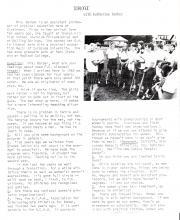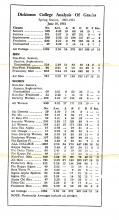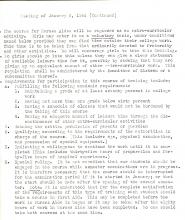New Courses: Emphasis on Women's Studies
In an insert in the Dickinson Women's Newsletter entitled CURRENT COURSES, classes that seem to have some emphasis on women's studies are listed for interested students. Courses include, Introduction to American Studies, Women as a Symbol, Women in Scandanavian Literature, Psychology and Religion, Contemporary People of Latin America, Population, and Relations Between Men and Women.






